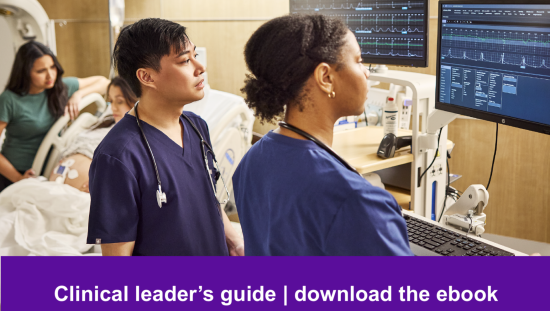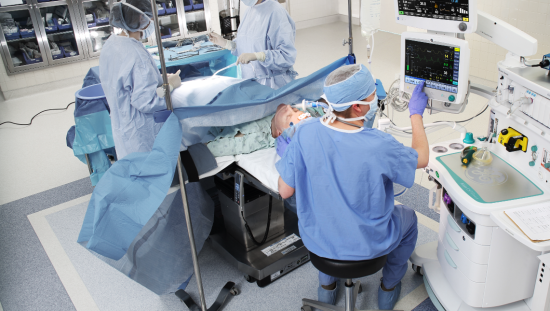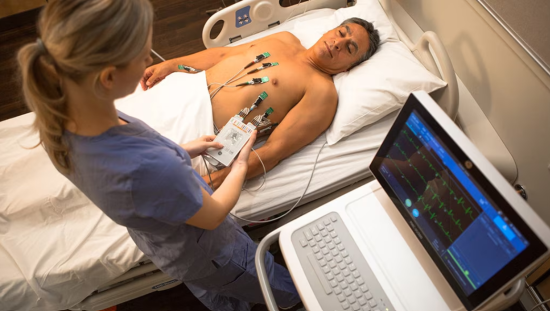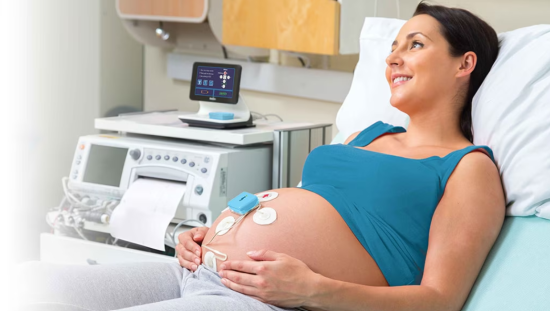When I was 17, my life was forever changed. A serious car accident left me with a broken neck, and a big question mark on my future. I wasn’t sure what was next or how to move ahead.
Thanks to the heroic efforts of skilled paramedics, emergency caregivers, and a gifted neurosurgeon, I made a full recovery. Even back then, I immediately knew I wanted to help others in the same way.
I started my nursing career in open heart surgery, where I fell in love with the pace, complexity, and analytical nature of the work. That early foundation of thinking critically in high-pressure environments continues to guide me today in my role as Vice President of Transformation Operations at HCA Healthcare.
In both cardiac and maternal care, I’ve seen how nuanced delivery of care can be. Medicine is a science, but delivering it is an art. Inherently complex, it is shaped by context, influenced by collaboration, and can be clouded by implicit bias and unintentional miscommunication.
That’s why consistency in high-stakes care matters, and where the right technology can make all the difference. When care teams share a clear, unified understanding of a patient, they can respond faster, with more confidence and fewer blind spots. Forming a critical “collective conscious” – the right digital tools help lighten the cognitive load, connect the dots across systems, and make sure everyone is seeing the same picture, in the same way, at the same time.
Gaining clarity in the “gray zone”
In high-complexity such as labor monitoring, there are a few modes: there’s usually broad agreement when everything looks good, and again a general consensus when everything clearly doesn’t. But it’s the tenuous space in between—the gray zone—that often challenges us the most. It’s where care teams may end up watching, waiting, and rationalizing their way through slow-building risk. That’s where clinical subjectivity can take over and where we have the greatest opportunity to improve outcomes.
This isn’t a matter of inexperience or poor training. It’s a reality of how healthcare is delivered: we have different team members, often with different clinical backgrounds and experiences, assessing the same patient from different perspectives. That diversity enriches our clinical care, but without a common reference point, and a way to cut through the subjectivity at hand, it can also delay a necessary course of action.
In those moments, consistency of care becomes critical. When care teams have access to the same data, surfaced in a meaningful way and grounded in clinical context, it becomes easier for us to reach that “collective conscious”, even in the most seemingly ambiguous situations. Digital tools that help reduce the noise and present a clearer picture of patient status across roles and disciplines can help guide us through.
How context guides care consistency
Fragmentation is a huge challenge facing labor and delivery teams today. Nurses and physicians often have to pull information from multiple systems, toggling between applications just to piece together a full clinical picture. This cognitive load may inadvertently slow down decision-making and increase the likelihood that details may be missed or overlooked.
Fetal heart rate (FHR) interpretation is a perfect example. Category I and III strips are usually straightforward—most clinicians can all agree on what they mean. But Category II strips fall in that gray zone, where things get subjective. While one clinician may see it trending closer to Category I, another may see it edging toward a Category III. That variation can create unnecessary friction and can even delay responses in critical moments.
This is where context matters most. When FHR interpretation is paired with additional data, such as prenatal records, maternal blood pressure, contraction patterns, and lab values, we are granted a fuller, more objective picture of the patient’s status. That central understanding helps teams move past subjectivity, align on risk, and act faster and with greater confidence.
We’ve seen firsthand how critical it is to develop digital tools that reflect the way care is delivered. By anchoring digital tools in the clinical reality of how our teams work, and ensuring these tools reflect clinicians’ input from the start, we’re creating a clearer path to more consistent, coordinated care.
Earning alignment to make the biggest impact
If there’s one thing I’ve learned from my years in care delivery, it’s that we can leverage the best technology, but technology alone won’t fix workflow challenges if we don’t also address the operational systems supporting them.
Our care teams are our most precious asset, but we have to be more intentional about how we support and deploy them. That means we need our digital tools to dive deeper than superficial insights, making sure they’re helping optimize staffing, share knowledge, and ensure the right people are in the right place at the right time.
Operational alignment plays a critical role in supporting consistent care delivery. When systems are not fully integrated, clinicians often find themselves navigating multiple platforms, reconciling varying data sources, and adapting to evolving protocols—all while remaining focused on providing compassionate, hands-on care. Over time, this kind of cognitive and emotional effort can challenge sustainability and efficiency.
That’s why I focus on areas where technology can support us. When we can harness innovation to span gaps across clinical, operational, and administrative layers, we’re helping to create a stronger, more sustainable foundation for consistent care delivery. Only then can we be confident we’re giving our teams the breathing room to focus on what they do best.
The future of high-stakes care needs high-tech
From my vantage point, so much has changed. From that young woman just getting started in nursing, to leading a team of innovators today, the one thing I know is that when we build tools that work for people, we can help make everyone better.
I’m optimistic about where we’re headed with HCA Healthcare’s partnership with GE Healthcare, because we’re solving important industry challenges and designing technology that supports the way clinicians actually work. This collaboration builds on our longstanding commitment to perinatal safety and our goal of delivering safe, evidence-based, timely care to mothers and babies. Tools like AI for clinical decision support are showing promise in helping hospitals streamline workflows and better support care teams within increasingly complex clinical environments.
What excites me most is the shift toward smarter, more seamless ways of capturing care as it happens without disrupting clinical flow. Whether it’s simplifying access to prenatal records or using ambient listening to reduce documentation burden, these innovations help close longstanding gaps in communication, access, and continuity.
When technology is built with clinicians at the table, it becomes an extension of the care team. That’s the future I believe in: one where consistent, high-quality maternal care is easier to deliver because the systems behind it are fully aligned.

Whitney Staub-Jeurgens, DNP-HSL, MSN, RN, NE-BC
Vice President, Clinical Operations, HCA Healthcare
Whitney Staub-Juergens, DNP-HSL, MSN, RN, NE-BC, is the Vice President of Transformation Operations for HCA Healthcare’s Department of Digital Transformation & Innovation. Whitney has a diverse background, having served as Vice President of Care Transformation Clinical Operations and as a hospital-based nurse, nurse practitioner, and executive nurse leader. Whitney provides strategic operations leadership for HCAH’s digital transformation agenda, focusing on DT&I execution, operating model oversight, talent acquisition, and optimization of operations and shared services. Whitney holds a Doctor of Nursing Practice from Chamberlain University and a Master’s degree in Nursing from Pennsylvania State University.








